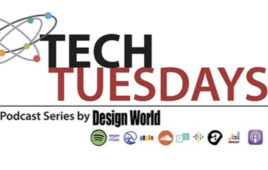[A lightly edited transcript follows …]
DW: I originally met Adam at the Fluid Power Distributor Association’s conference in Lake Tahoe earlier this year, and I thought the company gave some really interesting value propositions from the IoT for companies in the industrial space. Adam, for our audience, can you please describe for us a little bit about what Elevat does, how your technology works, and how that’s all related to fluid power and design engineering?
AL: Elevat-IoT actually incubated inside a fluid power distribution and manufacturing company out on the West Coast. That company is Western Integrated Technologies. I worked there for about 10 years, and what we were starting to see was during the electrification initiatives inside companies, right? Adding electronic controls onto machines, these manufacturers wanted to start getting more information about how the machines worked, how they operated, and the results they produced, and so forth, so they were looking for more information.
The struggle that they were running into was, in our industry, there’s a skillset gap. A lot of these companies don’t have software engineers, or let alone electrical engineers to solve this problem. We started incubating a project inside the walls. A few years ago we spun it out as a separate company with really the focus on tier two and tier three U.S. manufacturers that want to deploy IoT solutions in days, not weeks or months, so they can start offering immediate value to their customer base.
DW: Can you talk a little bit, Adam, about any interesting applications you’ve worked with, especially on the fluid power side of things?
AL: Sure. Yes, absolutely. We have roughly around 60 paid pilots out there right now with different customers and about half a dozen have gone into production. These customers could be street-sweeping applications where the street sweepers are monitoring how much work is being done from one street to the next, so they’re measuring when that brush is down with RPMs above a certain level, how much weight’s being plugged into the hopper. This is allowing them to provide better route optimization for the cities. We have another customer that builds very big forklifts for warehousing and they are monitoring safety elements, right? They’re monitoring production elements, how many lifts have been done, how much idle time on the fuel and so forth.
I would say that one of our most interesting applications has been when you get out into the forestry industry and we have forestry customers where they’re looking for how much fuel am I consuming and how much product am I producing. They’re pulling information off of their hydraullic systems. They’re pulling information off of their loaders. When port’s above a certain level, that probably means that my blades are starting to dull and if my blades are starting to dull, then the yield of my output is decreasing. These domain experts of their machines know what the valuable pieces are to monitor and now they have a platform they can easily deploy on the machines, start collecting data, and start looking at information.
DW: Very interesting. Adam, are there any particular industry segments or sectors that you see as particularly strong right now for this type of technology?
AL: Yes. We get a lot of interesting from the work truck industry, refuse. A lot of push in agriculture and not so much the precision agriculture, they have problems being solved a lot. This is coming from your harvesting machines, your nut shakers. Really, the … To go real general, tier two, tier three manufacturers, right? John Deere, and Cat, and Komatsu, they kind of have their solutions out there and they offer a lot of very high-tech features. But our tier two, tier three manufacturers in the U.S., they need something to compete with those customers. We’re seeing a ton of interest on that tier two, tier three category.
DW: Very cool. Adam, we hear so much, at least from my desk, I hear so much about the IoT and I’m afraid sometimes it might be becoming easy for engineers to start tuning it out. What parts of the IoT do you think are the most, let’s say, overblown in the media and then what parts are actually critical for today’s design engineers to understand?
AL: Yes, that’s a great question. Even though we’re an IoT company, we always kind of joke around that IoT’s not that interesting. It’s more of a feature. It’s kind of what you can do with IoT, right?
For us, the overblown part, you watch the masters and you see these really big companies like IBM shoring out all of this artificial intelligence and major data scientist applications on the engines, and the rails, and everything. Yes, that’s great for those customers, but 96% of the manufacturers in this country are not that customer profile. Where we really get them to focus is what is some data that’s on your machine or the way your machine’s been operated that you know about you are the main experts. If we can turn that into information then we help you guys turn that into knowledge. By doing that, you can look at things like are we over-designing the system. How can we provide better software on our controllers and our CAM systems to allow for higher output, to allow for higher safety? It’s really about empowering the manufacturers in the design world and giving them information to allow them to make better data-driven decisions.
DW: What would you say the issues are that are keeping your customers up at night?
AL: For us, we’re hearing a lot out that, it’s not even really related to IoT, it’s more around the skillset gap, this big workforce exit that will be happening over the next five to 10 years. Then there’s just right now a ton of supply chain backups, right? People are having a hard time getting components out the door, so we have a lot of customers that are getting ready for production but they’re really waiting on their supply chain.
DW: Okay. Lastly, can you tell us a little bit about maybe your business forecast for Elevat-IoT for the rest of 2018 and then into 2019? Since we’re almost through the 2018 year already.
AL: Sure. Yes, we’re definitely bullish. We have, like I said, about 60 paid pilot customers out there in the field right now with a handful into production. I think Elevat’s being run in a little bit over 300 organizations through the U.S. and Europe. We’re looking for pretty aggressive growth in 2019 as we bring on more pilots and convert those paid pilots to production customers.
DW: Great. Well, thanks for all this wonderful information Adam. Can you let our audience know where they can find Elevat-IoT either on social media or online?
AL: Yes, absolutely. Our website is www.elevat-iot.com. We also have a LinkedIn page as well.
Filed Under: PODCASTS



